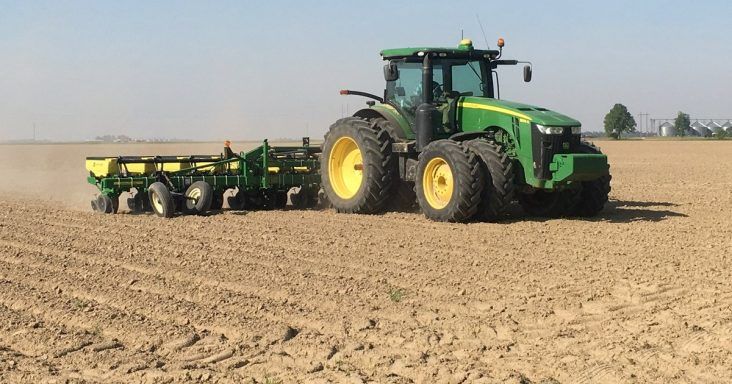Agriculture district programs offer farmers protection in the face of urban sprawl
by July 6, 2020 1:44 pm 330 views

Soybeans being planted in Clay County in northeast Arkansas. (photo courtesy of the University of Arkansas System Division of Agriculture, Stewart Runsick.)
For half a century, agricultural district programs, meant to protect farmers from the pressures of expanding urbanization, have evolved and been deployed in various forms around the country. The growing gap between agriculture and those in expanding suburban areas could pose a threat to those protections, however.
Agricultural districts are programs created and implemented by state or local governments. The protections and benefits they offer vary from place to place.
“Agricultural district programs are perhaps the oldest tool for protecting farmland against development pressures,” Brook Duer, staff attorney for the Penn State Center for Agricultural and Shale Law, said. “These programs offer a package of unique benefits geared to promote the continuation of agricultural use of that property by minimizing threats and maximizing benefits to do so.”
These programs, implemented in 16 states, work to protect agricultural resources by offering farmland owners protection from public or private nuisance claims, preferential property tax provisions and other benefits.
Since agricultural districts were enacted in the 1970’s, many of those areas have shifted from rural to suburban. Duer said that shift could hold negative implications for these programs.
“In the face of suburban development, there are some areas where ag districts may not be fully understood,” he said. “They may not even be supported by the local electorate at this point.”
The past, present and uncertain future of agricultural districts will be the topic of a July 15 webinar, hosted by the National Agricultural Law Center.
In this webinar, Duer will discuss the various forms of agricultural district programs, outline the states which have enacted such laws and how they’ve changed, compare the various concepts employed, and consider the future of these programs as the agricultural sector enters the 2020’s.
Online registration for the webinar is at this link. There is no cost to participate.
